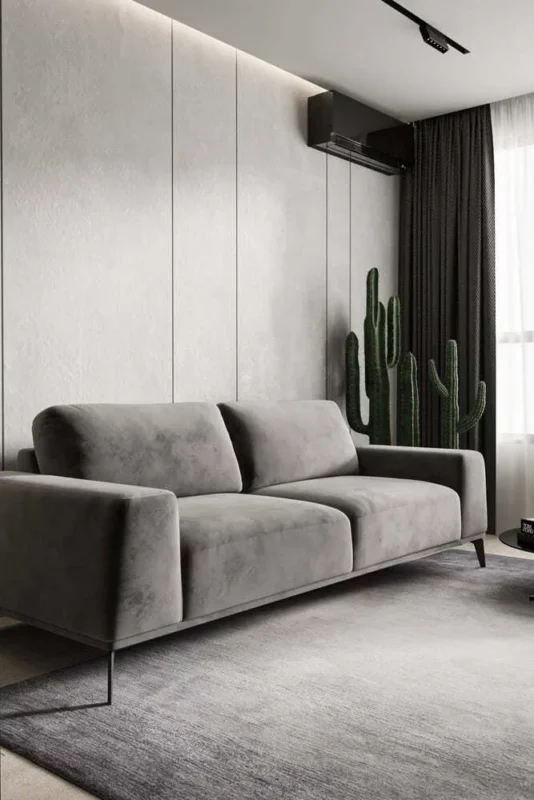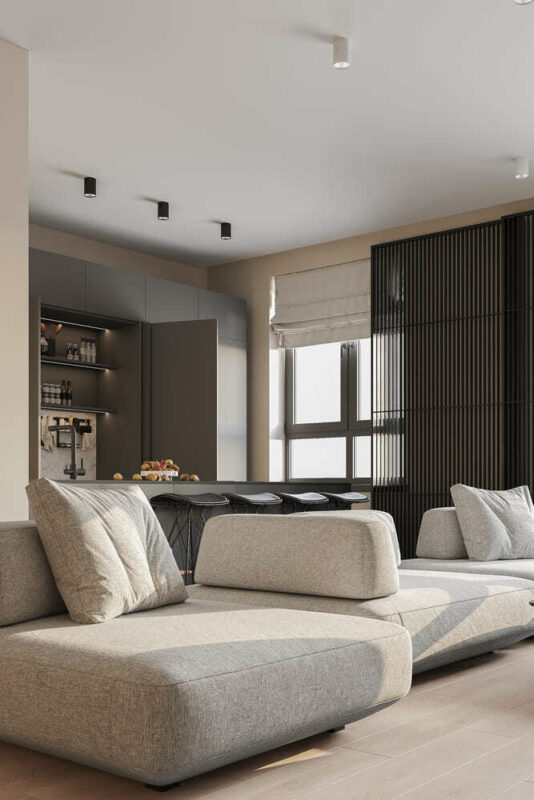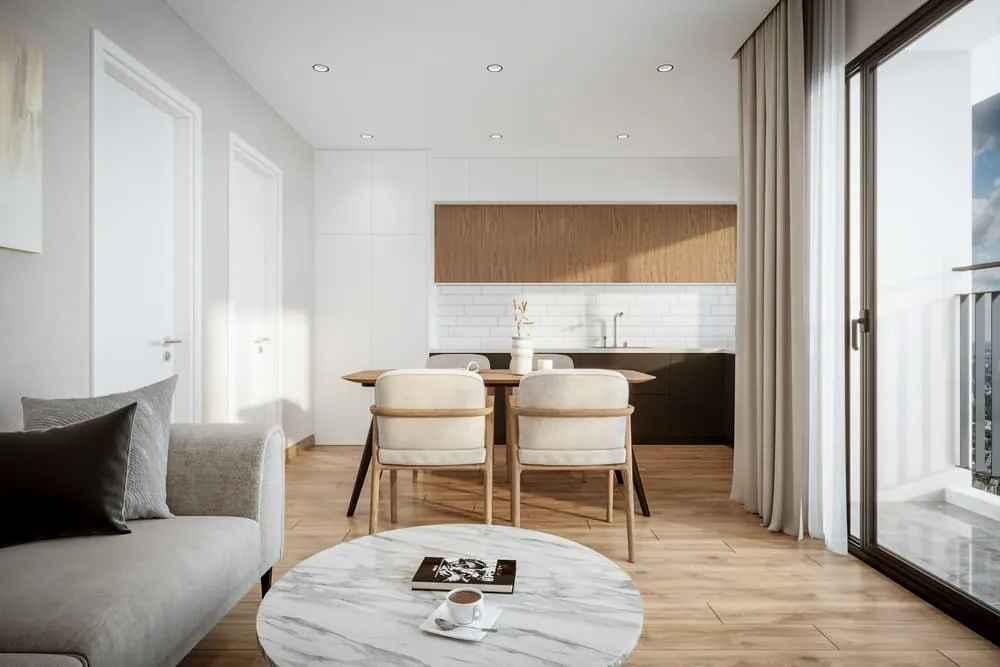In the realm of interior design, the creation of immersive and captivating spaces goes beyond just visual aesthetics. It delves into a multisensory experience where every element is meticulously curated to engage all the senses—sight, sound, touch, smell, and taste. This approach to interior design not only appeals to our visual sensibilities but also invokes emotions, memories, and a profound connection with the space. If you’re interested in exploring this fascinating world further, visit YouSee Studio to see how innovative techniques transform how we perceive interior spaces.
As we embark on a journey through the fascinating world of multi-sensory interior rendering, we will uncover the significance of appealing to all the senses in design. From the origins of this concept to its applications and impact on our well-being, this article will provide insights into a design philosophy that transcends the ordinary.
The Essence of Multi-Sensory Interior Rendering
The Birth of a Concept
The concept of multi-sensory design is not new; it draws inspiration from ancient architectural and cultural practices. Cultures worldwide have long recognized the power of the senses in creating meaningful and memorable experiences. From the soothing aroma of incense in a temple to the rhythmic sounds of water features in a garden, these sensory elements have been harnessed to evoke specific feelings and connections.
In contemporary interior design, this age-old wisdom has evolved into a holistic approach that considers the totality of human sensory experiences. It acknowledges that how we perceive and interact with a space is not limited to what we see. Instead, it encompasses an intricate interplay of sensory stimuli that shape our understanding and emotional response.
The Role of Sight
In interior rendering, visual aesthetics remain a cornerstone. It’s the first sense we engage when entering a space, profoundly influencing our perception. Using color, texture, lighting, and spatial arrangement strategically can create visual harmony and evoke specific moods. For instance, warm tones and soft textures may foster comfort and relaxation, while cool tones and sleek lines convey a sense of modernity and sophistication.
However, multi-sensory design takes visual aesthetics a step further. It considers what meets the eye and how different visual elements work together to create a cohesive and engaging experience. This involves carefully selecting materials, finishes, and colors that look good, feel right to the touch, and complement the other senses at play.
The Influence of Sound
Sound is a powerful yet often underestimated element in interior design. The acoustics significantly impact our comfort and perception. Consider the tranquility of a well-designed spa, where soft music and the gentle sound of flowing water create a serene ambiance. Conversely, a bustling café with lively chatter and clinking dishes conveys a different atmosphere.
Incorporating sound into interior rendering can be as simple as choosing suitable flooring material to minimize noise or as complex as integrating a sound system that enhances the mood. Whether it’s the soothing rustle of leaves in a virtual forest retreat or the gentle hum of machinery in a digital industrial setting, sound adds depth and authenticity to the immersive experience.
The Importance of Touch
The tactile aspect of design is one of the most direct ways to engage our senses. The texture of a fabric, the coolness of a marble countertop, or the warmth of a wooden floor all contribute to our sensory experience. Multi-sensory interior rendering emphasizes using materials and finishes that invite touch and create a sense of comfort and familiarity.
Moreover, the digital tools available today enable designers to simulate textures remarkably realistically. Through advanced rendering techniques, you can virtually feel the smoothness of polished stone or the softness of a plush rug, even before the physical space is created.
Evoking Emotions Through Smell
Scents have a profound ability to trigger memories and emotions. When you step into a bakery and catch the aroma of freshly baked bread, it immediately transports you to comforting and nostalgic places. In multi-sensory interior rendering, scent can be a subtle yet potent tool.
By strategically introducing scents into the virtual representation of a space, designers can elicit specific emotional responses. Whether it’s the refreshing scent of citrus in a virtual spa or the earthy aroma of wood in a digital cabin retreat, scent can help create a multisensory narrative that resonates deeply with the viewer.
The Unconventional Sense: Taste
While not a primary element in interior rendering, taste can still play a role in specific design contexts. In spaces like restaurants and kitchens, the visual representation of food and ingredients can evoke cravings and anticipation. Designers can harness the power of taste by integrating culinary elements into the rendering, making the viewer see and almost taste the experience.

Applications and Benefits of Multi-Sensory Interior Rendering
Enhancing User Experience
One of the primary benefits of multi-sensory interior rendering is its ability to enhance the user experience. When clients or users can virtually engage with a space through multiple senses, they develop a deeper connection and understanding of the design concept. This results in more informed decisions and greater ownership and satisfaction.
Versatility in Design
Multi-sensory interior rendering is a versatile approach that can be applied across various design styles and sectors. From residential homes and commercial spaces to hospitality and healthcare environments, the principles of multi-sensory design can be tailored to suit each project’s specific needs and objectives.
Fostering Well-Being
Designs that consider the multisensory experience also contribute to the well-being of occupants. Spaces that harmoniously engage the senses tend to be more comfortable, stress-reducing, and enjoyable. For example, a well-designed office with appropriate lighting, acoustics, and ergonomic furniture can enhance productivity and employee satisfaction.
Embracing Innovation
Multi-sensory interior rendering pushes the boundaries of design innovation. It encourages designers to explore new materials, technologies, and ideas that can elevate the sensory experience. This innovative spirit can lead to groundbreaking designs that captivate and inspire.

Tools and Techniques
Advanced Rendering Software
The foundation of multi-sensory interior rendering lies in advanced rendering software. These digital tools enable designers to create highly detailed and realistic virtual environments where every sensory element can be meticulously crafted. Leading software packages, such as Autodesk 3ds Max, V-Ray, and Blender, offer a wide range of features to simulate materials, lighting, and textures with astonishing accuracy.
Photorealistic Textures
Textures are a crucial component of multisensory design. In the digital realm, designers can access vast libraries of photorealistic textures. Whether it’s simulating the roughness of stone, the softness of fabric, or the sparkle of polished metal, these textures are essential in creating an authentic sensory experience.
Spatial Sound Simulation
Sound plays a pivotal role in multi-sensory interior rendering. To replicate the acoustics of a space accurately, designers can employ spatial sound simulation techniques. This technology allows for the placement of virtual sound sources within a digital environment, ensuring that the auditory aspect of the design is just as immersive as the visual.
Scent Diffusion Systems
Introducing scent into the virtual experience is a challenging yet rewarding endeavor. Scent diffusion systems, often used in theme parks and museums, can be integrated into multi-sensory interior rendering. These systems release specific scents at precise moments in the virtual tour, enhancing the viewer’s immersion and emotional connection.
Virtual Reality (VR) and Augmented Reality (AR)
The rise of VR and AR technologies has revolutionized multi-sensory interior rendering. With VR headsets, users can step directly into a virtual space, exploring and interacting with the environment as if they were physically present. AR, on the other hand, overlays digital elements in the real world, offering a unique blend of sensory experiences.
Remarkable Examples
The Ritz-Carlton Kyoto’s Digital Tour
The Ritz-Carlton Kyoto in Japan provides a compelling example of how multi-sensory interior rendering can be employed in the hospitality industry. Prospective guests can take a virtual tour of the hotel, complete with realistic ambient sounds, stunning visuals, and even the gentle fragrance of cherry blossoms in the air. This immersive experience allows potential visitors to feel the hotel’s atmosphere before reservation.
Automotive Showrooms
Leading automobile manufacturers have embraced multi-sensory interior rendering to provide potential buyers with a unique showroom experience. Car showrooms now feature digital presentations that give the vehicles the visual, the simulated sounds of engines, and the tactile sensation of touching the steering wheel and upholstery.
Healthcare Environments
In healthcare design, multi-sensory interior rendering has been instrumental in creating patient-centric spaces. Hospitals and clinics use this approach to design calming environments that reduce patient anxiety. Virtual tours of healthcare facilities can include soothing music, the sight of nature-inspired visuals, and even the subtle scent of lavender to promote relaxation.
Retail Spaces
Brick-and-mortar retailers have harnessed the power of multi-sensory interior rendering to compete with online shopping experiences. Virtual store tours can replicate the ambiance of a physical store, complete with background chatter, the rustling of shopping bags, and the ability to touch and feel products virtually. This approach aims to recreate the sensory aspects of in-person shopping, enhancing the connection between customers and brands.

The Future of Multi-Sensory Interior Rendering
The future of multi-sensory interior rendering is poised for exciting developments. As technology advances, we can expect even more immersive and realistic sensory experiences in design. Here are some trends and possibilities to look forward to:
Haptic Feedback
Haptic feedback technology allows users to experience tactile sensations in virtual environments. Imagine feeling the texture of a fabric or the coolness of a marble countertop through a VR headset. This technology holds immense potential for enhancing multi-sensory interior rendering.
Artificial Intelligence (AI)
AI algorithms can analyze user interactions with virtual environments and adapt in real time to provide personalized sensory experiences. For instance, AI can adjust the lighting, sound, and scents in a virtual spa based on an individual’s preferences and reactions.
Cross-Sensory Experiences
Future designs may explore cross-sensory experiences, where sensory elements blend and interact to create new sensations. These experiences could include visuals that respond to sounds or scents that change based on the user’s movements.
Accessibility and Inclusivity
Designers are increasingly focused on making multi-sensory experiences accessible to individuals with disabilities. This includes creating virtual spaces that cater to different sensory needs, such as providing audio descriptions for visually impaired users or tactile feedback for those with hearing impairments.
Conclusion
Multi-sensory interior rendering represents a dynamic shift in how we approach design. It goes beyond the visual and engages all our senses to create spaces that are not just beautiful but profoundly immersive and emotionally resonant. The tools and techniques available today enable designers to craft experiences that captivate and inspire, from advanced rendering software to spatial sound simulation and scent diffusion systems.
As we look to the future, the possibilities for multi-sensory design are limitless. With haptic feedback, AI-driven personalization, and cross-sensory experiences on the horizon, we can anticipate even more astonishing developments in this field. What’s certain is that multi-sensory interior rendering will continue bridging the gap between the physical and digital realms, transforming how we design and experience spaces.
In a world where the senses play a profound role in our lives, multi-sensory interior rendering invites us to explore design as a multisensory art form, where every space tells a story that can be seen, heard, touched, smelled, and felt.
